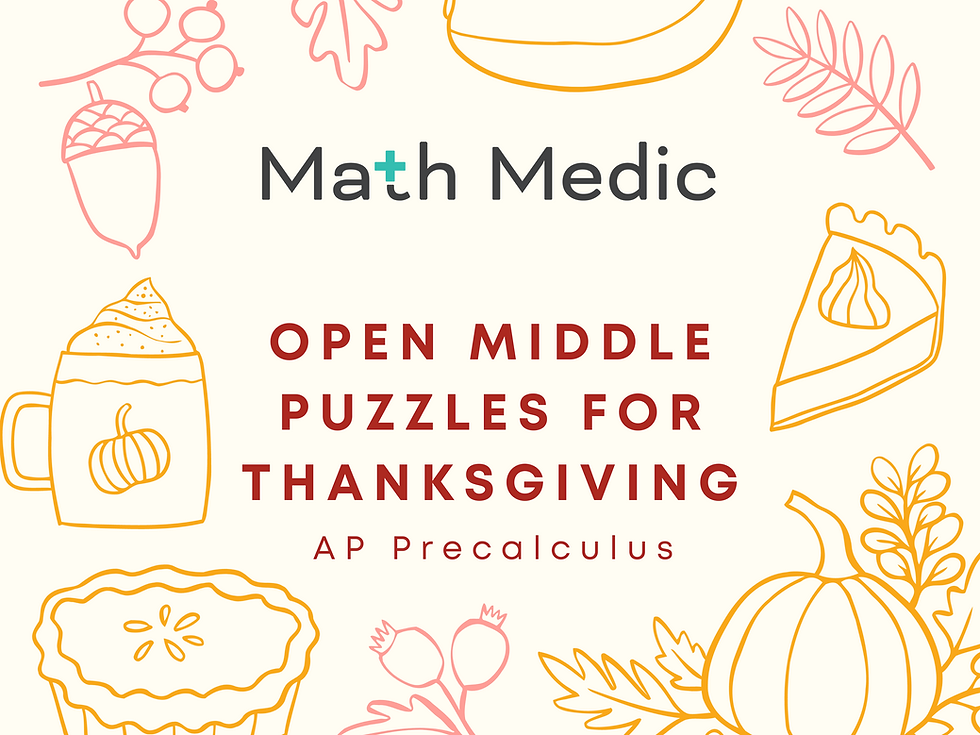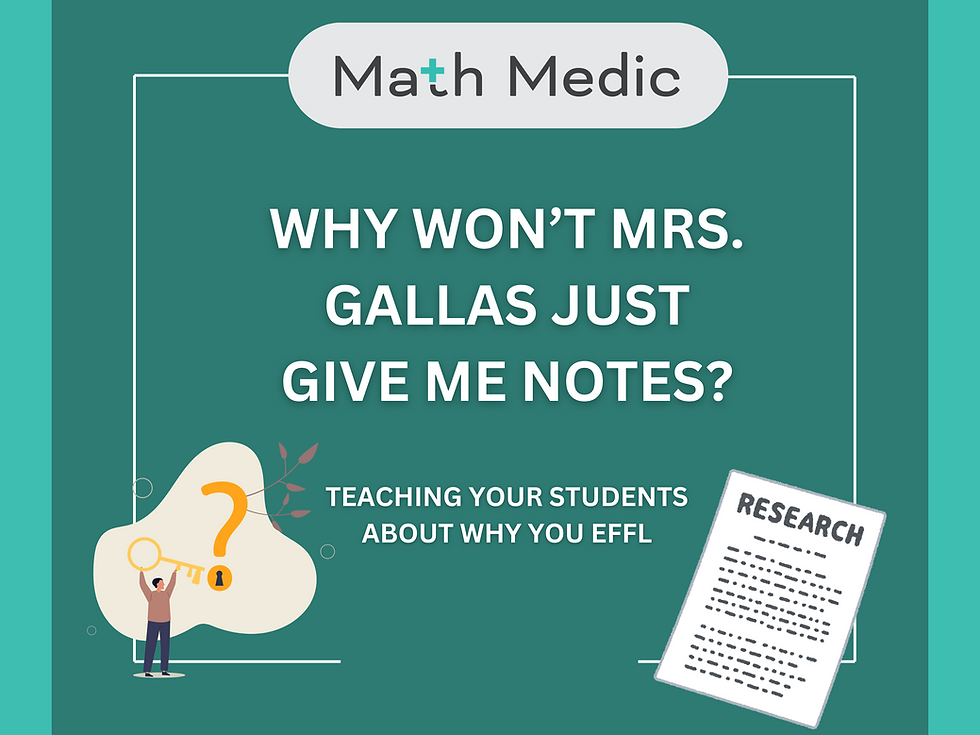AP Precalc Exam Review: Gallery Walk
- Sarah Stecher

- Mar 21, 2024
- 2 min read
Updated: Feb 5
Every lesson this year started students out with an experience. After the experience, we helped students formalize their learning by layering mathematical vocabulary, notation, or formulas on top of the experience. One of the benefits of this instructional approach is that we always have a landmark activity to refer back to, something that will trigger students' retrieval of past content. Instead of saying "remember what we did in lesson 1.4?" we can say "remember what we learned from Pamela's Fitbit data?"
Get The Classroom Ready
Before students arrive for class, set up 6 - 12 stations around the room. Each station will have a reminder of a different activity that took place during the school year. Posting the front page of the EFFL lesson is generally sufficient. If you have other artifacts from the lesson, feel free to add them!
Print the recording sheet for students to fill out at each station.
Which Activities Could Be Included?
What is Pamela’s Current Speed? (Rates of change)
What is the Business Cycle? (Concavity)
From Zero to Hero (Zeros of Polynomials)
How Much Anesthesia Should the Patient Get? (Rational Functions and End Behavior)
The “Hole” Truth (Graphs of Rational Functions)
Geri’s Greeting Cards (Linear vs. Exponential Functions)
How Often Should You Take DayQuil? (Constructing Exponential Models)
Eating Out vs. Eating at Home (Using Regression Models)
The Mystery Function (Inverses of Exponential Functions)
Trig Ratios in the Wild (Defining Sine, Cosine, and Tangent)
It’s Getting Hot Out Here! (Modeling with Trigonometric Functions)
How Are the Slopes Changing? (Tangent Function)
Supervising the Sky (Polar Coordinates)
What’s Going On in this Graph? (Rates of Change of Polar Functions)
Facilitating a Gallery Walk
Put students into groups of 3 - 5.
Send each group to a different starting station.
Set timer (suggestion 4 minutes).
Students have a discussion about the activity at their station. When time is up, they move to the next station. They move until they have visited all the stations.
At the last station, allow each group to share out about that activity.
Sample Student Response
At the end of the gallery walk, we ask students to share out. Here is an exemplary response:
"In "How Are the Slopes Changing?" we used a Geogebra applet to look at the slopes of the terminal ray as we kept changing the angle. The tangent function outputs the slope. We saw that when the ray was vertical, the slope was undefined which made sense with what we knew from Algebra 1. When the terminal ray was horizontal, it lined up with angles of 0 and π, and the slope was 0. The slopes started repeating after a while and we learned the period of the tangent function was π."
Ready to help your students re-live their aha moments from this year? Download the activity below!



